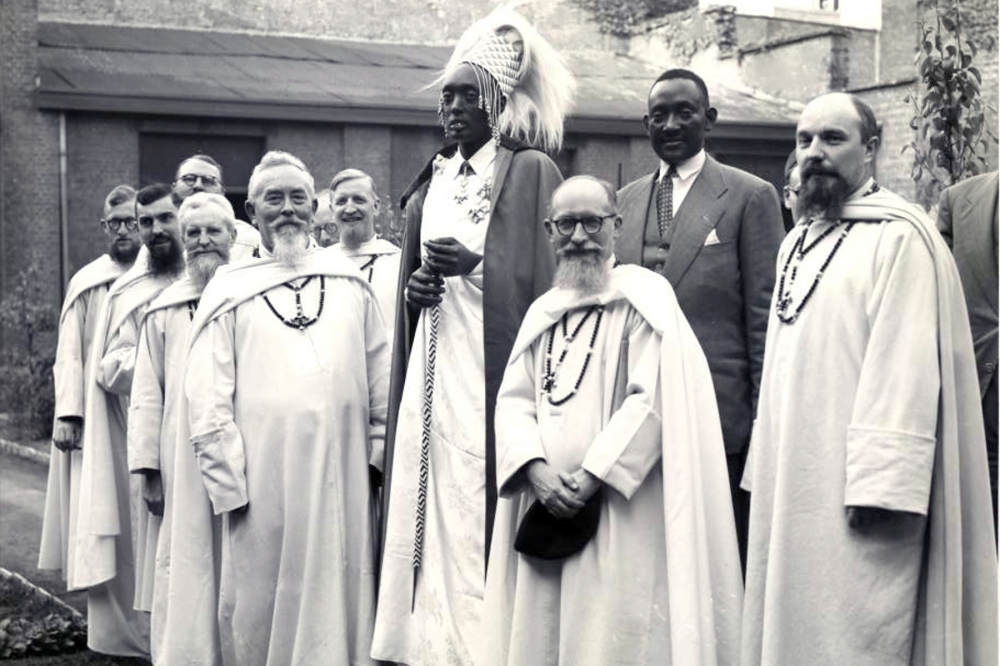

Mutara III Rudahigwa bent to the demands of Belgian colonial masters. Unlike his father Yuhi V Musinga, Rudahigwa softened stance to buy time. He worked to save Rwanda and Rwandans behind colonial dictates. He was to pay the price but his heroic acts inspired successive generations to date.
Mutara III Rudahigwa was baptized in 1943, after 12 years. He chose the names Charles-Leon-Pierre. His spouse Gicanda was baptized Rosalie; The queen mother too was baptized under the name Radegonde.
ALSO READ: Yuhi V Musinga&039;s struggle against Belgian colonists
It was realized in the previous text that there was economic and social progress. On the economic front yet a determining factor was mining. Three companies: MINETAN, SOMUKI and GEORUANDA took charge of the mining sector.
Though coffee was an important source of income, the harvest was limited to one season per year. Mining companies extracted cassiterite all year round and sent it to foreign markets. Rwandans got jobs and received salaries. They got professional training for the purpose. Rwandans in the private sector began to progress.
In addition to coffee as cash crop, pyrethrum cultivation and tea were introduced. Under the reign of Mutara III Rudahigwa there was intensification of Rwandans immigrating to Uganda and Tanganyika, which were then under the British rule. This was geared at economic progress in those countries.
His administration behind curtains opened avenues for Rwandans to gain economically in those countries. Word has it that he told Rwandans who went to work in mines in DR Congo now to stay indefinitely. This was due to the fact that colonial machinations had balkanized Africa leading to Rwanda losing territory to neighbouring countries. People could move, not so the land.
During Mutara III Rudahigwa reign, Kigali airport and Kamembe airfield were constructed. There was creation of laboratories and veterinary dispensaries. Customary corvées, uburetwa, and colonial corvées, akazi were abolished. In 1954, pastoral clientelism, ubuhake, criticized for some of its restrictive aspects, was abolished. Nyanza dairy and the Gisenyi brewery were inaugurated.
On the social front, education was encouraged. The official school of Nyanza trained would-be chiefs and sub-chiefs for six years. The teaching at the beginning was done in Swahili, the official language of the European administration then. The school had preparatory schools in Cyangugu (in today’s Rusizi District). Ruhengeli (Musanze District), Gatsibo (Gatsibo District) and Rukira (Kirehe District). Three years were spent at these schools and another three years at Nyanza given their intellectual and economic capabilities.
Schools of the same level as Nyanza one in Save (Gisagara District) and Kigali (Kigali city) were entrusted to missionaries. Six years would be spent there without having to go to Nyanza. These schools gave Rwanda the first generation of chiefs and sub-chiefs. Primary and secondary schools were proliferated. Rwandan written press Kinyamateka (1933) and Echo du séminaire/L'ami (1938, 1945), were hence created. In 1957, the Mutara III Scholarship Fund intended to finance studies abroad for promising young Rwandans was created.
There were mass conversions of Rwandans to Catholicism. Later King Rudahigwa consecrated Rwanda to Christ the king. In 1939 and 1943, Danish Baptist Church and the Free Methodist Church saw the day respectively. In 1952 the first Rwandan bishop, Aloys Bigirumwami, at the same time the first bishop of Belgian "colonial" Africa, was consecrated. There was fight against the Ruzagayura famine of 1943-1944. History has it that it killed 200,000 people out of two million population of the country.
Political front: There was abolition of royalties for the benefit of the king. The king’s council of 1932 that became the council of the country in 1942 and in 1952 the high council of the country were established. Elections of councils of chiefs and sub-chiefs took place in 1952. In 1948, 1951, 1954, 1957 and 1960, visiting missions to assess Rwanda’s progress as a territory under Belgian trusteeship were received.
Mutara III Rudahigwa earlier collaborated with the Belgian administration and the catholic church. However, in the second half of 1950s, there was disagreement with the two institutions due to their biased involvement in Rwandan politics especially ethnic antagonisms.
Read also: Mutara III Rudahigwa became Belgian choice after Musinga’s disgrace
King Mutara III Rudahigwa is known for leadership, modernization and commitment to the Welfare of Rwandans. He strongly advocated for Rwandan independence and played a crucial part in the country’s political process. In 1956, he headed a delegation to Belgium to demand for greater political autonomy for Rwanda. This finally led to the independence of Rwanda in 1962 although he had died in 1959.
Mutara III Rudahigwa died under dubious circumstances. Logic points to assassination by Belgian colonialists just as it was done in other African colonies under different colonial masters. At the dawn of demanding for independence, influential figures were assassinated.
He died in Bujumbura-Burundi. His death shocked Rwandans (his spouse Rosalie Gicanda died during Genocide against the Tutsi in 1994). He was interred at Nyanza (Nyanza district now). They mourned the death of their beloved king and national hero. Little wonder he is among Rwandan heroes at the Heroes Mausoleum near Amahoro Stadium.


